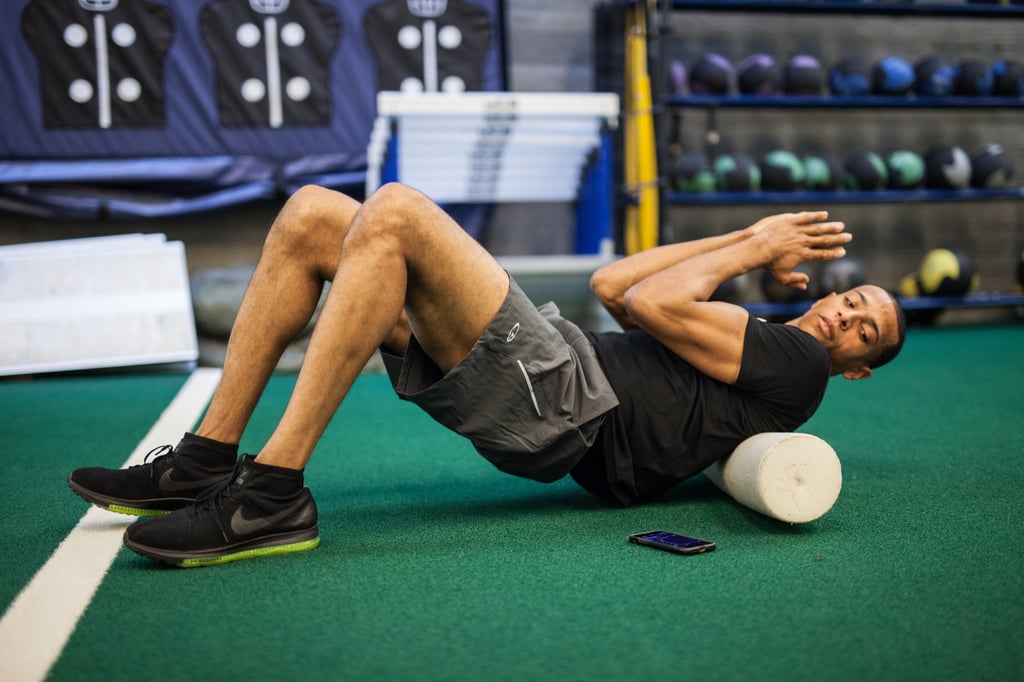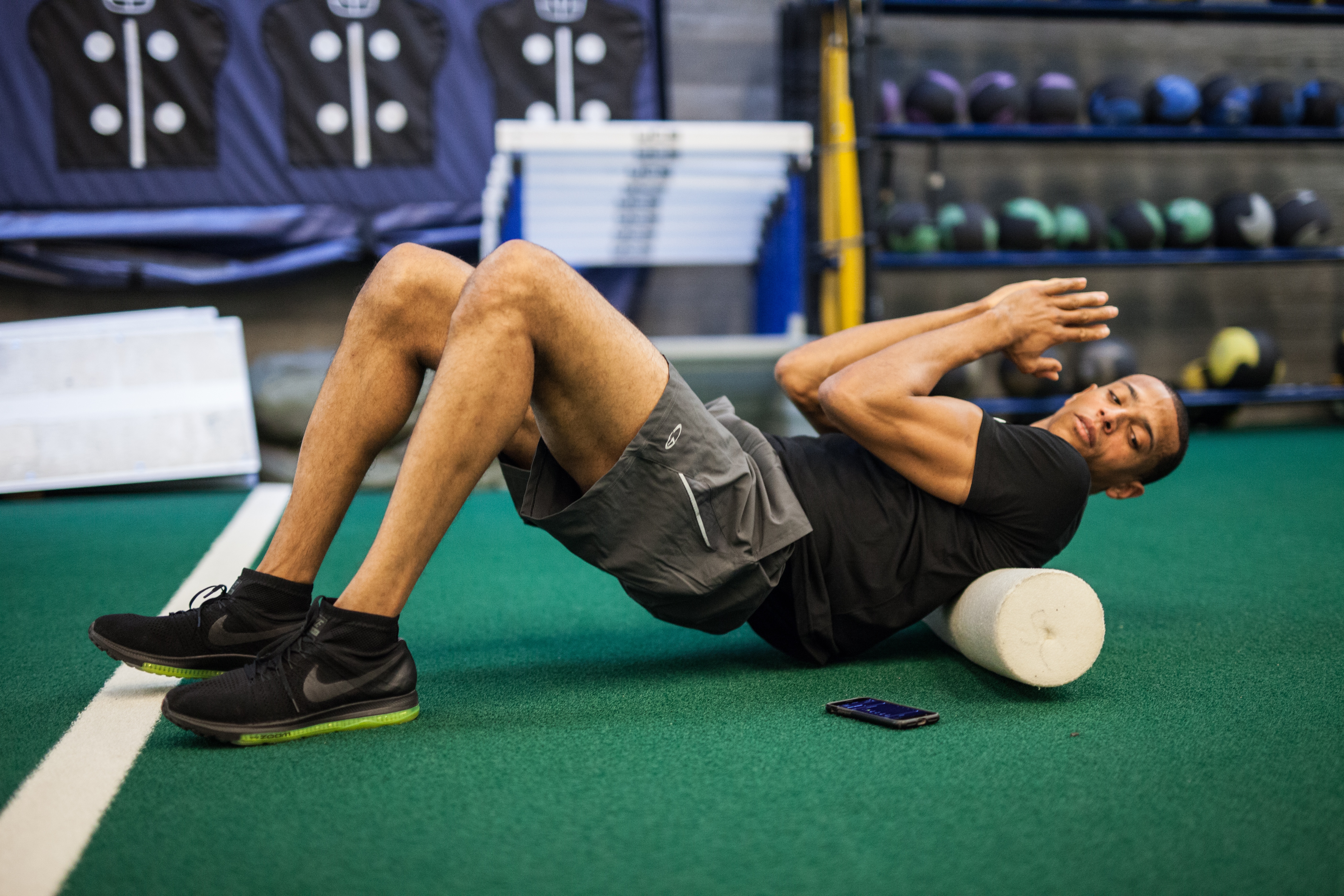Delayed Onset Muscle Soreness (DOMS)

Delayed onset muscle soreness (DOMS) is common for all athletes and is caused after performing high-intensity unaccustomed exercises. More specifically, it is due to the high intensity eccentric (lengthening) contractions during these exercises. Eccentric contractions in unprepared muscles can cause micro traumas to the muscle that result in soreness. DOMS tend to concentrate at muscle-tendon junctions due to the high concentration of muscle pain receptors at these myotendinous junctions. An athlete's body responds to this damaged muscle tissue by swelling and causing muscles to feel tender.
DOMS typically increases within 24-hours after an athlete completes a workout and peaks between 24 and 72 hours. This is why athletes might not feel sore immediately after a hard workout, but the pain appears 1 or 2 days after. It is important for athletes to incorporate techniques to maximize recovery and minimize soreness to get ready for their next practice or competition.
DOMS: Impact on performance
DOMS can have a major impact on athletic performance. When an athlete is symptomatic and sore, muscles compensate to reduce the stress on the muscle groups affected by DOMS. This compensation can alter joint range of motion, reduce strength and power, and change technique.
-
Alter joint range of motion can increase the risk of injury as the cushioning effect from a full range of motion is reduced. In addition, this reduction negatively affects athletic performance causing a loss in movement efficiency.
-
Reduce strength and power is also seen during DOMS. Studies have shown a great reduction in eccentric muscle contractions and peak torque. An athlete will be unable to reach previous power output levels when their muscles are not firing at normal levels.
-
Change technique is often associated with DOMS to compensate for the soreness of certain muscle groups. This not only decreases efficiency of an athlete’s movements, but it can also increase the susceptibility to injury. If DOMS symptoms are severe enough to alter technique, strain will be put on certain muscles, tendons, or ligaments. So while DOMS is a sub-clinical injury, it’s affects may lead to more serious injuries if technique and recovery are not monitored and taken seriously.
DOMS: Prevention tips
There are many recovery techniques that can help lessen the affects of DOMS on athletic bodies. These techniques include cryotherapy (icing/ice baths), stretching, massage, compression, and anti-inflammatory drugs.
-
Icing causes vasoconstriction helping to reduce inflammation around the muscle micro traumas caused by DOMS. Additionally, ice baths can help increase circulation and accelerate recovery.
-
Stretching and massage also increase body circulation and blood flow to the injured muscles. Furthermore, stretching can improve joint range of motion that is impaired through DOMS.
-
Compression wear can help increase blood circulation from your extremities back to your heart for oxygenation meaning that oxygen is deliver more efficiently to sore muscles.
-
Anti-inflammatory drugs can help alleviate some of the pain and inflammation associated with DOMS. However, it is important to recognize that taking anti-inflammatory drugs should be done with caution and is not an end-all solution to DOMS.
Recap
DOMS negatively impacts athletic performance by reducing joint mobility, decreasing muscle power, and changing technique. Recovery from DOMS can be accelerated with many techniques including but not limited to: cryotherapy, stretching, compression, massage and anti-inflammatory drugs. Athletes should be proactive and take action to accelerate recovery before they feel the symptoms of DOMS. Proper warm-down and nutrition after a tough workout can also reduce soreness and discomfort in the following days. To learn about more ways to decrease DOMS and increase athletic performance check out this article on recovery and this article on post-workout nutrition.
About the Author

At Bridge, we are all athletes and coaches first. As athletes, our team has experienced everything from riding the pine on JV, to winning NCAA championships, to competing in the Olympic Games. As coaches, we have helped countless athletes reach their full potential, winning everything from age group section championships to Olympic Gold Medals.
Related Posts

The Best Bench Press Variation You’re...
This post is part of our Coaches Corner series with Taylor Rimmer. Taylor is NSCA-CPT, StrongFirst...

Does Powerlifting Harm Heart Health?
A recent study has discovered that a 12-week supervised strength training program (SSTP) may result...
-1.png)
Barefoot Running: Is It For You? |...
Run Free: Consider Less Cushion
Updated October 2020:
With more athletes looking for ways to...

